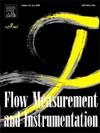Numerical simulation of the external acoustic field characteristics of gas pipeline leakage
IF 2.3
3区 工程技术
Q2 ENGINEERING, MECHANICAL
引用次数: 0
Abstract
The external acoustic field characteristics of leakage from pipelines are crucial in assessing the feasibility of non-contact acoustic methods for pipeline leakage detection. This study explores the characteristics of such leakage in gas pipelines by coupling Computational Fluid Dynamics (CFD) flow field calculations with the acoustic software ACTRAN. Large Eddy Simulation (LES) was first employed to calculate the unsteady flow field during a leak of gas pipelines. To account for the high Mach number associated with gas pipeline leakage, the Möhring acoustic analogy method was employed to extract the aerodynamic noise source. This approach utilized time-averaged flow velocity data from the unsteady flow field as the background flow. The study further examined the characteristics of the external leakage sound source under varying fluid pressure conditions. Additionally, the near-field and far-field propagation characteristics of the sound source were analyzed using a combination of acoustic finite element and infinite element methods. The results demonstrate that a high-velocity jet region forms at the outlet of the leakage hole during a gas pipeline leak, generating a leakage sound source predominantly characterized by a quadrupole sound source. The peak sound pressure level of the leakage noise is primarily concentrated in the low-frequency range. While the pressure differential between the inside and outside of the pipeline influences the intensity of the sound source within the jet region, it does not significantly affect the frequency characteristics of the sound source. The strong sound source distribution largely coincides with the jet region, and the propagation of the leakage sound source along the jet direction is symmetric, with this symmetry maintained across varying distances.
输气管道泄漏外声场特性的数值模拟
管道泄漏的外部声场特征是评估非接触声学方法在管道泄漏检测中的可行性的关键。本研究通过将计算流体力学(CFD)流场计算与声学软件ACTRAN相结合,探讨了天然气管道中此类泄漏的特征。首次将大涡模拟(LES)应用于天然气管道泄漏时的非定常流场计算。针对燃气管道泄漏带来的高马赫数问题,采用Möhring声学类比法提取气动噪声源。该方法利用非定常流场的时间平均流速数据作为背景流。进一步研究了不同流体压力条件下外漏声源的特性。此外,采用声学有限元和无限元相结合的方法分析了声源的近场和远场传播特性。结果表明:燃气管道泄漏时,在泄漏孔出口处形成高速射流区,产生以四极声源为主的泄漏声源;泄漏噪声的峰值声压级主要集中在低频范围内。管道内外压差影响射流区域内声源的强度,但对声源的频率特性影响不显著。强声源分布与射流区域基本重合,泄漏声源沿射流方向的传播是对称的,这种对称性在不同距离上保持不变。
本文章由计算机程序翻译,如有差异,请以英文原文为准。
求助全文
约1分钟内获得全文
求助全文
来源期刊

Flow Measurement and Instrumentation
工程技术-工程:机械
CiteScore
4.30
自引率
13.60%
发文量
123
审稿时长
6 months
期刊介绍:
Flow Measurement and Instrumentation is dedicated to disseminating the latest research results on all aspects of flow measurement, in both closed conduits and open channels. The design of flow measurement systems involves a wide variety of multidisciplinary activities including modelling the flow sensor, the fluid flow and the sensor/fluid interactions through the use of computation techniques; the development of advanced transducer systems and their associated signal processing and the laboratory and field assessment of the overall system under ideal and disturbed conditions.
FMI is the essential forum for critical information exchange, and contributions are particularly encouraged in the following areas of interest:
Modelling: the application of mathematical and computational modelling to the interaction of fluid dynamics with flowmeters, including flowmeter behaviour, improved flowmeter design and installation problems. Application of CAD/CAE techniques to flowmeter modelling are eligible.
Design and development: the detailed design of the flowmeter head and/or signal processing aspects of novel flowmeters. Emphasis is given to papers identifying new sensor configurations, multisensor flow measurement systems, non-intrusive flow metering techniques and the application of microelectronic techniques in smart or intelligent systems.
Calibration techniques: including descriptions of new or existing calibration facilities and techniques, calibration data from different flowmeter types, and calibration intercomparison data from different laboratories.
Installation effect data: dealing with the effects of non-ideal flow conditions on flowmeters. Papers combining a theoretical understanding of flowmeter behaviour with experimental work are particularly welcome.
 求助内容:
求助内容: 应助结果提醒方式:
应助结果提醒方式:


